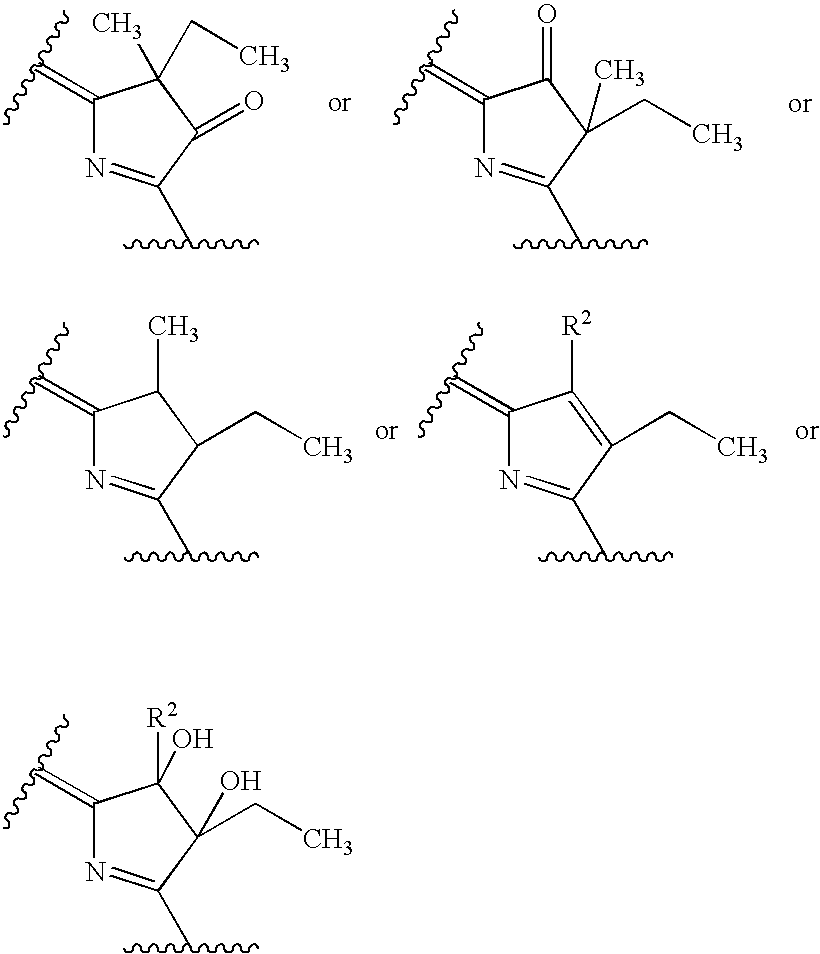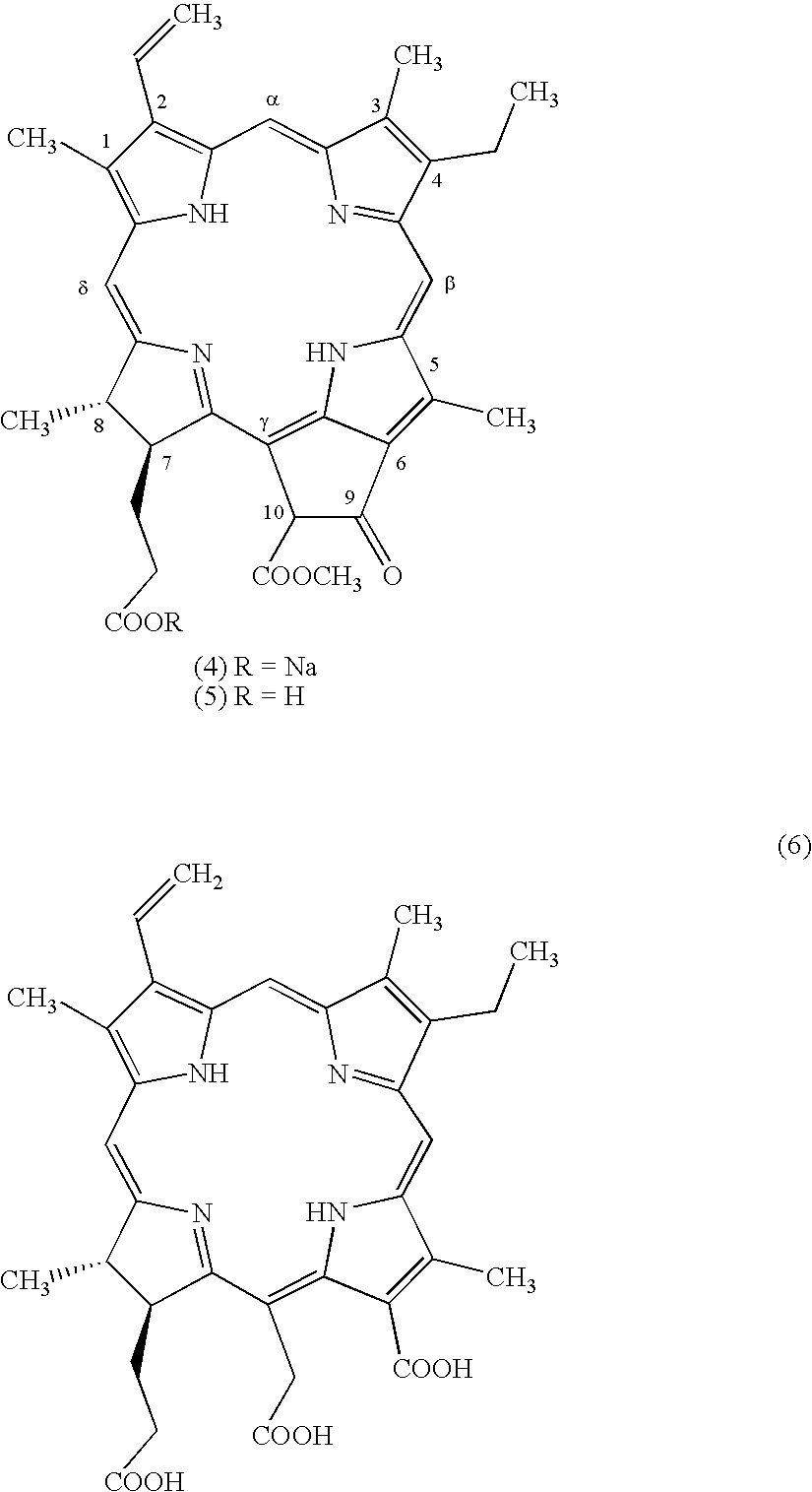Water-soluble mono-PEGylated tetrapyrrole derivatives for photodynamic therapy and method of production
a technology of monopegylated tetrapyrrole and photodynamic therapy, which is applied in the direction of biocide, heterocyclic compound active ingredients, drug compositions, etc., can solve the problems of low solubility of physiological solutions, difficult to prepare effective pharmaceutical grade injectable solutions for pdt and other applications, and lack of reproducibility and difficulty in the work-up and utilization of toxic reagents
- Summary
- Abstract
- Description
- Claims
- Application Information
AI Technical Summary
Benefits of technology
Problems solved by technology
Method used
Image
Examples
example 1
Preparation of Bacteriopheophorbide a (14)
[0106] 9
[0107] A solution of bacteriochlorophyll a (15) (45 mg, 0.05 mmol, a product of Sigma-Aldrich Corp.) in a mixture of trifluoroacetic acid (1.2 mL) and water (0.3 mL) was kept at room temperature for 3 hours, concentrated in vacuum (.about.20 mmHg) at room temperature, diluted with water and extracted with dichloromethane. The extracts were washed with water, dried, 5 concentrated, and purified on Silica gel with a mixture of 5% MeOH--CHCl.sub.3 to give 31 mg (98%) of bacteriopheophorbide a (14).
example 2
Preparation of Pyro-bacteriopheophorbide a (16)
[0108] 10
[0109] A mixture of bacteriopheophorbide a (14) (65 mg, 0.11 mmol) and pyridine (4 mL) was refluxed for 12 hrs, cooled, evaporated to dryness, diluted with water and extracted with dichloromethane. The extracts were washed with 1N hydrochloric acid, water, dried, concentrated, and purified on Silica gel with a mixture of 5% MeOH--CHCl.sub.3 to give 59 mg (94%) of pyro-bacteriopheophorbide a (16).
example 3
Preparation of Water-soluble Mono-PEGylated Chlorin e6 Derivatives (17 and 18)
[0110] 11
[0111] A mixture of methyl pheophorbide a (19) (10 mg, 0.017 mmol) and MeO-PEG.sub.750-NH.sub.2 or MeO-PEG.sub.2000-NH.sub.2 (0.068 mmol, 4 eq.) (a product of RAPP Polymere GmbH) in tetrahydrofuran (0.5 mL) was kept at room temperature for 3 days, diluted with dichloromethane, washed with 0.5 N HCl aqueous solution, water, dried, concentrated, and purified on Silica gel with a mixture of 5% MeOH--CHCl.sub.3. The resulting solution of (17) or (18) was evaporated to dryness, re-dissolved in water (2 mL), filtered through a 45 .mu.m filter and freeze dried to give 60-70% of water-soluble compound (17) and (18), respectively.
PUM
| Property | Measurement | Unit |
|---|---|---|
| Density | aaaaa | aaaaa |
| Density | aaaaa | aaaaa |
| Density | aaaaa | aaaaa |
Abstract
Description
Claims
Application Information
 Login to View More
Login to View More - R&D
- Intellectual Property
- Life Sciences
- Materials
- Tech Scout
- Unparalleled Data Quality
- Higher Quality Content
- 60% Fewer Hallucinations
Browse by: Latest US Patents, China's latest patents, Technical Efficacy Thesaurus, Application Domain, Technology Topic, Popular Technical Reports.
© 2025 PatSnap. All rights reserved.Legal|Privacy policy|Modern Slavery Act Transparency Statement|Sitemap|About US| Contact US: help@patsnap.com



